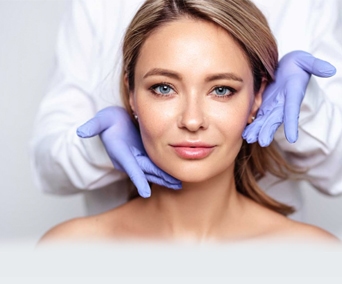The common skin changes that occur with age — such as a thinning dermis and epidermis, decreased wound healing, and shrinking eccrine sweat glands — contribute to many conditions seen in elderly patients’ skin. As the number of elderly Americans steadily increases (it is estimated that by 2030, 20 percent of the population will be older than 65 years), these age-related dermatological disorders remain a significant focus of the aesthetic industry.
Three of the common skin conditions that your aesthetic business will see in elderly patients are photo damage, benign and malignant growths, pruritis, and vascular insufficiency. These conditions can be caused by a number of internal and external factors that affect the structure and function of the dermis. Below, we’ll take a brief look at each condition and its treatment.
Photo Damage
Photo damage, or sun damage, is the most common condition associated with aging skin. The presence of this skin condition is usually indicated by solar lentigines (benign growths) and actinic keratoses (reddened, rough plaques on sun-exposed areas of the skin). Treatment is not necessary for solar lentigines, except for cosmetic purposes. Untreated actinic keratoses, while not usually malignant, can lead to agresssive squamous cell carcinoma in approximately 5 to 20 percent of cases. Treatment options for actinic keratoses are cryotherapy (local destruction with liquid nitrogen), curettage, and the application of topical ointments such as 5-fluorouracil, diclofenac, or imiquiod.
Pruritis
Pruritis is itchy skin that occurs with or without a rash. The condition affects almost 50 percent of patients aged 60 years or older. Common causes of pruritis without a rash are anemia, chronic renal or hepatic insufficiency, diabetes mellitus, drug allergy, and thyroid disease. Pruritis that occurs with a rash is frequently the result of dermatitis (such as eczema). If no rash is present, pruritis is typically treated with emollient moisturizers ad antihistamines. If the pruritis is caused by dermatitis, the skin is usually treated with topical or systemic corticosteroids.
Vascular Insufficiency
Venous insufficiency is a condition whereby the flow of blood from the lower limbs to the heart is insufficient, causing blood to collect, or “pool” in the legs. the most common causes of venous insufficiency are venous thrombosis (blood clots), valvular incompetence, and varicose veins. Patients suffering from vascular insufficiency are usually advised to wear compression stockings, elevate their legs as much as possible, and avoid prolonged standing.
The diagnosis and treatment of skin disease in is usually straightforward and requires no laboratory testing. A skin analysis with a device like Pear 3D is usually sufficient to detect the above skin disorders. By understanding the function and changing structure of aging skin, your aesthetic business will be best prepared to address the skin concerns of your elderly patients.

